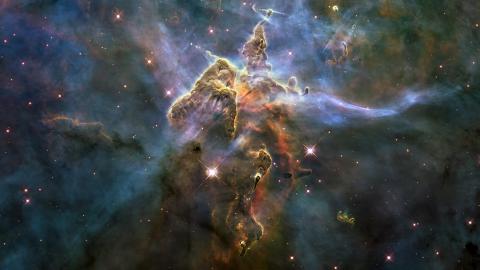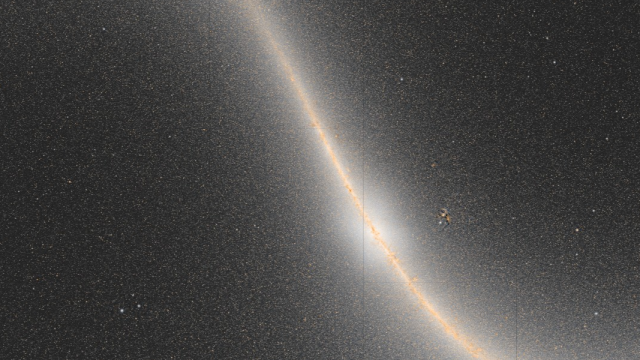Astronomers figure out why some galaxies are missing dark matter

- A new paper presents a possible reason for why some dwarf galaxies appear to be missing dark matter.
- The researchers at the University of California, Riverside ran cosmological simulations to find the answers.
- They discovered some galaxies were stripped of dark matter through extreme tidal loss.
Astronomers discovered that extreme tidal loss may be a possible explanation for why some galaxies seem to have no dark matter, a mystery type of matter that’s supposed to take up to 27 percent of the universe, according to NASA. Dark energy takes up another 68 percent, creating a repulsive force that speeds up the universe’s expansion. Neither has been directly seen so far but rather inferred through their effects on space.
The team from the University of California, Riverside, found anomalies in some smaller galaxies, known as “dwarf galaxies” (containing up to a billion stars, compared to the Milky Way’s 200-400 billion). Some appear to have no dark matter at all. This is despite the fact that they were formed in galaxies that were teeming with dark matter previously. What is the explanation for this phenomenon, which muddies our understanding of dark matter?
The scientists used a cosmological simulation called Illustris on dark-matter-free galaxies DF2 and DF4. They wanted to understand how similar space objects would evolve and what might have happened that led them to lose dark matter. The simulation could create galaxies, with evolving stars, supernovas, and growing and merging black holes. Within the simulation, the researchers found “dwarf galaxies” similar to DF2 and DF4 which lost over 90 percent of their dark matter through the process of tidal stripping, in which material is stripped from the galaxy by galactic tidal forces.
The study’s first author was the physics and astronomy graduate student Jessica Doppel, while the co-author Laura Sales, an associate professor of physics and astronomy, was Doppel’s graduate advisor.
“Interestingly, the same mechanism of tidal stripping is able to explain other properties of dwarfs like DF2 and DF4 — for example, the fact that they are ‘ultradiffuse’ galaxies,” said Sales. “Our simulations suggest a combined solution to both the structure of these dwarfs and their low dark matter content. Possibly, extreme tidal mass loss in otherwise normal dwarf galaxies is how ultradiffuse objects are formed.”
Besides Sales and Doppel, the study involved Julio F. Navarro from the University of Victoria in Canada, Mario G. Abadi and Felipe Ramos-Almendares of the National University of Córdoba in Argentina, Eric W. Peng of Peking University in China, and Elisa Toloba of the University of the Pacific in California.

Laura Sales (seated, left) and her research group of students, including Jessica Doppel (seated, right).Credit: UCR/Stan Lim
Sales’s team is currently collaborating with the Max Planck Institute for Astrophysics in Germany to improve the simulations with more advanced physics and a resolution that’s 16 times better than the Illustris they used on this study.
Check out the new paper, published in the Monthly Notices of the Royal Astronomical Society.





